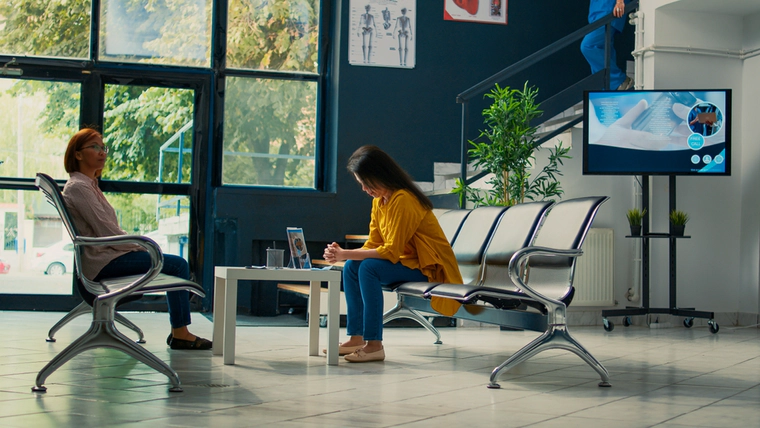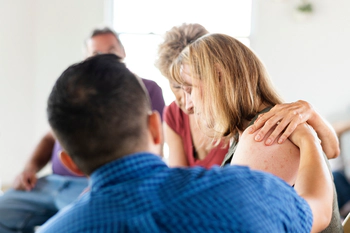Is the Addiction Treatment Gap Opening or Closing?
This article covers the latest data on the treatment gap, showing how individual families must help their loved ones get into treatment, even if doing so often feels like an uphill battle.

The addiction treatment gap is defined as the disparity between those in America who need treatment for drug and alcohol addiction and those who get it. Unfortunately, the treatment gap is very wide, with all data suggesting the gap is getting slightly wider with each passing year.
The Treatment Gap Today
According to a report by the Substance Abuse and Mental Health Services Administration, in 2015, 21.7 million Americans needed treatment for drug and alcohol addiction, roughly 8.1% of the population over the age of 12. During that year, just 2.3 million Americans received treatment for a drug or alcohol addiction, representing just 10.8% of the total number of addicts who needed help.1
Fast forward to 2022, and the situation is even more dire. According to the National Survey on Drug Use and Health, 4.1 million Americans received treatment for a drug or alcohol addiction in 2022. That is a good sign, as it’s significantly more people receiving treatment than in 2015.2
However, America’s addiction epidemic became significantly worse between 2015 and 2022. According to the data, in 2022, 44.8 million Americans met the criteria for drug and alcohol addiction, more than double the figure in 2015. Not only are far more people using mind-altering substances and becoming addicted to them, but fewer are receiving treatment for their addiction, despite negative effects. In 2015, a little more than 10.5% received treatment. By 2022, the number of addicts had more than doubled, yet only 9.1% received treatment.
Barriers to Treatment and a Lack of Willingness to Seek Help are Huge Factors
Closing the treatment gap will require significant policy measures to make treatment more accessible to those who need it. Many addicts who say they want help insist that accessing that help is extremely difficult. Public health efforts and policy changes should be made so that treatment is more readily available to those who need it and want it.
However, noted in both the 2015 and 2022 reports, one of the critical roadblocks to closing the treatment gap is that most addicts who don’t seek treatment also say they don’t need or want treatment.
In 2015, among the estimated 19.3 million people who were classified as needing but not receiving substance abuse treatment at a specialty facility, about 18.4 million (95.4%) did not think they needed treatment.
In 2022, among the estimated 40.7 million people with an addiction who did not receive treatment at a specialty facility, 39.5 million (96.8%) felt they did not need treatment.
Families Can Help Their Loved Ones Seek Treatment

Barriers to treatment are real and legitimate. However, as the above findings show, an addict’s willingness plays a huge role in more than 90% of addicts not receiving treatment. Yet parents and family members of addicts can play a role in helping to convince their loved ones that they must get help.
Loved ones of addicts should always seek opportunities to talk to their family members about their drinking or drug use, using strategies like the following:
Engage in honest conversations. Sometimes, loved ones try to ignore an addict’s addiction to “keep the peace.” That helps no one, not the addict or those who care about him.
Don’t enable an addicted loved one. Don’t take actions that may make it easier for the individual to continue using drugs, even if the actions seem helpful to them. Such actions include letting the addict borrow the family car, lending them money, giving them a place to stay, loaning them valuables, or giving them a cell phone.
Help the loved one see what the future looks like if they don’t seek help. Addicts sometimes feel like they don’t need help because their addiction is “not really harming them” in their minds. Showing them what life will look like in the future if they keep using drugs and explaining the harmful effects of the drugs they’re using is a must.
Things not to say and do include:
- Don’t talk to a loved one when they’re under the influence of drugs and alcohol.
- Don’t try to force someone into treatment. Treatment works best when the individual wants it and truly desires to get better.
- Don’t stigmatize or stereotype an addict by using language that condemns or belittles them. The goal has to be helping them understand they have a problem, not that they are the problem.
Overcoming addiction in America will only happen when we close the addiction gap. That’s why it’s up to the family members and friends of addicts to do everything they can to help their loved ones enter treatment.
Sources:
-
SAMHSA. “America’s Need for and Receipt of Substance Use Treatment in 2015.” Substance Abuse and Mental Health Services Administration, 2016. samhsa.gov ↩︎
-
NSDUH. “Key Substance Use and Mental Health Indicators in the United States: Results from the 2021 National Survey on Drug Use and Health.” National Survey on Drug Use and Health, 2022. samhsa.gov ↩︎







 ®
®